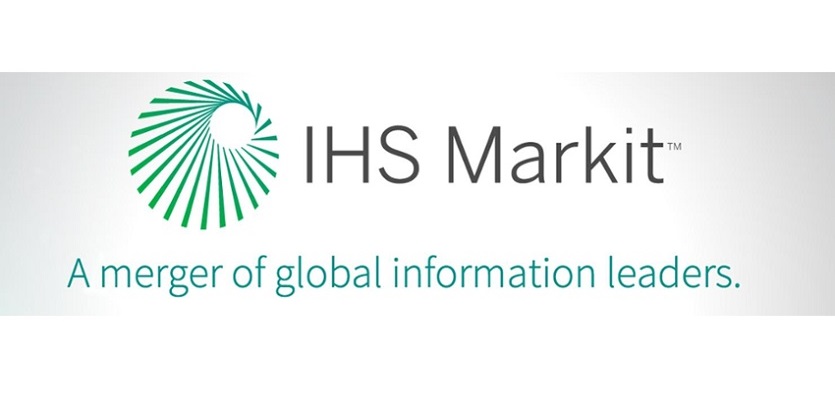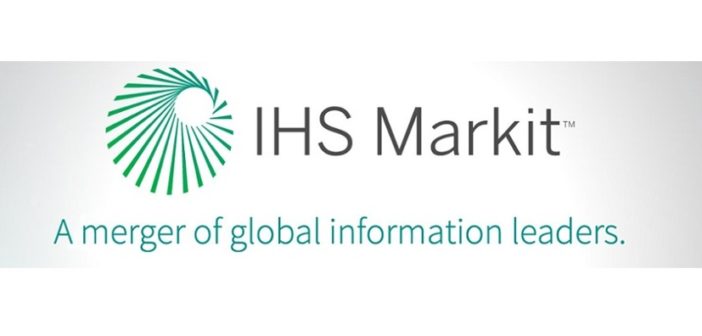
Spending rose nearly 5 percent in 2018 to reach $1.78 trillion, driven by budget increases in North America and Europe
Global defence expenditure grew 4.9 percent in 2018, the fastest growth rate since 2008, according to the annual Jane’s Defence Budget report, released by business information provider IHS Markit.
Global defence spending grew for the fifth consecutive year to reach a total of $1.78 trillion in 2018, significantly exceeding the post-Cold War record of $1.69 trillion in 2010, according to the report. Fueling this increase was a 5.8 percent, $54 billion boost to NATO spending largely due to higher defence spending in the US. Jane’s by IHS Markit forecasts that overall NATO defence expenditure will exceed $1 trillion in 2019.
“Following a challenging period for NATO members in the wake of the global financial crisis, countries have begun to increase defence spending again, in response to emerging threats,” said Fenella McGerty, principal analyst at Jane’s. “This has slowed the rebalance in defence expenditure toward emerging markets.”
Jane’s projects that global defence spending growth will moderate to a level of around 2 percent per year over the next five years as budget increases in Europe and North America slow and emerging markets again become the key source of growth.
“In 2018, we’ve seen a reversal of recent trends with Western states driving growth,” said Craig Caffrey, principal analyst at Jane’s. “Going forward we still see Asia and the Middle East as the key sources of sustainable increases in defence spending.”
NATO members increase spending
In 2010, NATO member spending accounted for two thirds of global defence expenditure. As emerging markets expanded and developed economies implemented cuts over the decade, the balance of global defence expenditure shifted dramatically. The NATO share of expenditure steadily declined to just 55 percent in 2017 with non-NATO spending on track to surpass NATO expenditure by the early-2020s.
“As 24 of the 29 NATO members increased their defence budget in 2018, the decline in the NATO share of global spending has stalled,” McGerty said. “The recommitment to defence in Western states means the global balance of expenditure between NATO and non-NATO markets is now more likely to shift from the mid-2020s.”
Nine NATO members will reach the 2 percent of GDP benchmark for defence expenditure in 2019 – compared to just four members in 2014. These countries are the US, Greece, Estonia, Lithuania, United Kingdom, Poland, France, Latvia and Romania.
US continues to invest in modernisation
US defence spending increased by $46 billion in 2018 to reach $702.5 billion as the Pentagon sought to improve military readiness and bolster missile defence capabilities. The 7 percent boost to the Pentagon’s budget represents the largest increase in US defence spending since 2008.
“Modernisation accounts will reach $244.1 billion in fiscal year (FY) 2019 – the highest level of investment funding since the period FY2007-2010, which experienced the maximum Overseas Contingency Operations and maximum US Department of Defense (US DoD) spending levels,” said Guy Eastman, senior analyst at Jane’s. “The funding levels for FY2018 and FY2019 have enabled the US DoD to start on the road to improved readiness and acquire improved warfighting capabilities.”
Eastern European budgets continue to expand, while Germany’s 11 percent spending boost will bolster Western Europe’s total
Six of the ten fastest growing defence budgets in the world in 2018 were situated in Eastern Europe. Defence spending in the region grew almost 9 percent in 2018 with Poland, Romania and the Ukraine driving increases. Notably, spending on military equipment has more than doubled in the region since the annexation of Crimea in 2014.
Western European defence spending increased for the third consecutive year in 2018 to reach $248 billion – 2.4 percent higher than 2017. In 2019, regional spending should exceed pre-financial crisis levels as growth accelerates to 3.6 percent driven by a major 11 percent increase in the German defence budget.
“As fiscal balances have improved, countries are able to respond to a markedly poorer security environment and address the capability gaps that have emerged,” McGerty said. “European defence cooperation is also a driving factor as countries look to bolster domestic capabilities but also partner on new technologies, all of which requires greater investment.”
While the outlook for defence spending growth in Europe appears on an upward trend, this hinges on a stable UK defence budget and therefore upon the outcome of Brexit negotiations and the impact on the UK economy.
Strong economic conditions in Asia-Pacific drive accelerated growth
Growth in Asia-Pacific accelerated to 3.6 percent in 2018 but remains below the average 4.8 percent rate seen over the past decade. Total regional spending reached a record high of $465 billion in 2018.
Despite security concerns, economic growth continues to be the primary driver of defence budget growth in Asia.
“Strategic drivers are undoubtedly becoming more important, but trends continue to be dictated by economic and fiscal conditions. Strong underlying economic fundamentals mean that Asia is where we expect the majority of the sustainable long-term growth will come from,” Caffrey said. “From a budgetary perspective, we’re still seeing very few indicators that an arms race is underway in Asia”.
Saudi surpasses France as fifth largest defence spender
Higher oil prices over the course of 2018 contributed to an uptick in growth in the Middle East and North Africa with total spending in the region reaching $180 billion. Saudi Arabia increased its defence outlay by 7 percent to hit $56 billion, making the Kingdom the fifth largest spender on defence globally.
“The large increase in Saudi Arabia’s defence budget drove trends in MENA,” Caffrey said. “With oil prices falling again in the latter part of the year, regional growth is likely to remain relatively conservative in the short term.”
Brazil dominates defence spending in Latin America
Latin America’s defence spending grew 10.4 percent in 2018, reaching a new high of almost $62 billion. Brazil’s allocation of $29.9 billion accounted for 48.3 percent of this total.
“The recovery in Latin American defence budgets continued this year, but aside from Venezuela, where hyperinflation necessitated massive spending supplements, growth was markedly slower than in 2017,” said Andrew MacDonald, senior analyst at Jane’s.
Top 20 defence budgets – 2017 and 2018 (USD billion)
| Position | Country | 2017* | Position | Country | 2018* |
| 1 | USA | 656.7 | 1 | USA | 702.5 |
| 2 | China | 191.2 | 2 | China | 207.6 |
| 3 | India | 61.2 | 3 | India | 62.1 |
| 4 | UK | 57.0 | 4 | UK | 58.4 |
| 5 | France | 52.5 | 5 | Saudi Arabia | 56.0 |
| 6 | Saudi Arabia | 52.1 | 6 | France | 53.6 |
| 7 | Russia | 50.9 | 7 | Russia | 51.6 |
| 8 | Japan | 48.3 | 8 | Japan | 45.1 |
| 9 | Germany | 43.5 | 9 | Germany | 44.5 |
| 10 | South Korea | 38.0 | 10 | South Korea | 39.1 |
| 11 | Australia | 32.1 | 11 | Australia | 32.0 |
| 12 | Brazil | 28.9 | 12 | Brazil | 29.9 |
| 13 | Italy | 26.7 | 13 | Italy | 27.2 |
| 14 | UAE | 19.3 | 14 | UAE | 21.4 |
| 15 | Canada | 16.5 | 15 | Iran | 17.4 |
| 16 | Israel | 16.4 | 16 | Canada | 16.1 |
| 17 | Iran | 16.2 | 17 | Israel | 16.0 |
| 18 | Taiwan | 14.6 | 18 | Spain | 15.3 |
| 19 | Spain | 14.4 | 19 | Taiwan | 14.5 |
| 20 | Pakistan | 12.0 | 20 | Turkey | 13.0 |
*Figures in constant 2018 USD billions. The intelligence cutoff for this report is 13 December 2018.
About IHS Markit (www.ihsmarkit.com)
IHS Markit (Nasdaq: INFO) is a world leader in critical information, analytics and solutions for the major industries and markets that drive economies worldwide. The company delivers next-generation information, analytics and solutions to customers in business, finance and government, improving their operational efficiency and providing deep insights that lead to well-informed, confident decisions. IHS Markit has more than 50,000 business and government customers, including 80 percent of the Fortune Global 500 and the world’s leading financial institutions.
IHS Markit is a registered trademark of IHS Markit Ltd. and/or its affiliates. All other company and product names may be trademarks of their respective owners © 2018 IHS Markit Ltd. All rights reserved.
About the Jane’s Annual Defence Budgets Report
The Jane’s Defence Budgets team produces the annual Jane’s Defence Budgets Report every December. The report examines and forecasts defence expenditure for 105 countries and captures 99 percent of global defence spending.
The Jane’s Annual Defence Budgets Report is the world’s most comprehensive, forward-looking study of government’s defence budgets. Tracking 99 percent of the global defence expenditure from 105 of the world’s largest defence budgets, data is compiled from Jane’s Defence Budgets online solution platform. It includes five-year forecasts, historical data, budget charting, trend evaluation and in-depth analysis by country. In this study, values are based on constant 2018 US dollars.






